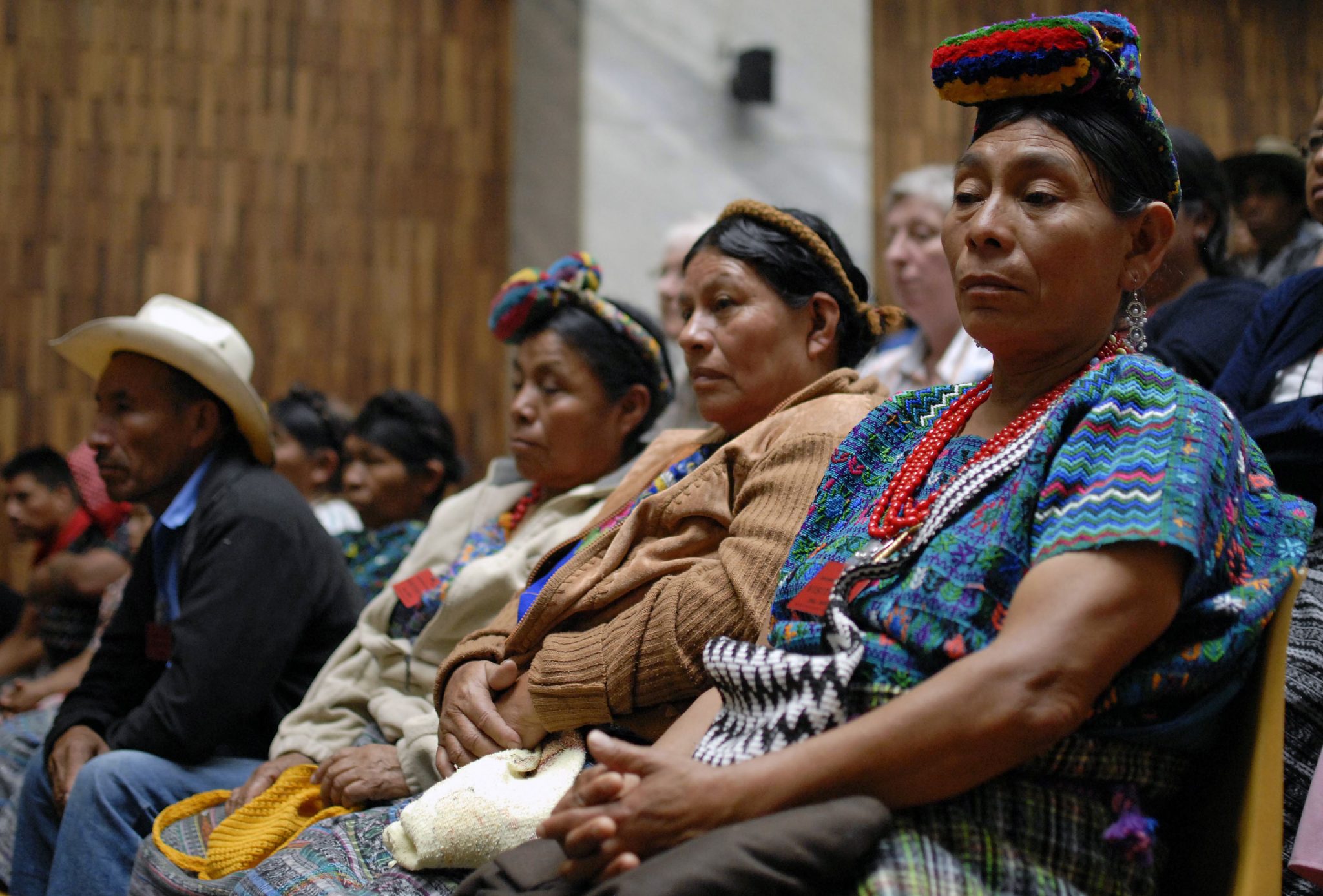By Luke Moffett, Queen’s University Belfast


(Photo by Jose Miguel Lam/AFP/Getty Images)
Up in the highlands of Guatemala, a dark history haunts the mist-covered treelines. In the late 1970s and 1980s, a raging civil war claimed the lives of some 200,000 people, most of whom were indigenous. Across the country, 626 massacre sites have been identified.
On April 16, 1981, in the small mountain Mayan community of Cocop in northern Guatemala’s Ixil region, the army massacred between 70 and 90 civilians. Their bodies were piled up and burned. The survivors fled into the mountains to eke out a living off the land until the civil war died down in the mid-1990s.
Nearly 40 years on, the search for justice for the genocide’s victims continues—and the harm caused by the genocide affects the lives of many Mayan Guatemalans even today.
The killing of so many Mayans badly damaged their transmission of oral history and traditional knowledge, such as the use of local plants as medicines and traditional healthcare, and their own language and cultural practices. There was also a land dimension to the genocide, where people were forcibly displaced to make way for large-scale farming, mining, and hydroelectric programmes.
The genocide has also affected subsequent generations. During the war teachers fled the school, leaving children without an education. One of these former students, now an adult, told my co-researchers and I:
I was 11 when I witnessed the massacre. I was in second year in school. After the killings we all fled, but I couldn’t eat for over a week. Our lives stopped. I got no further education and I am left now as a peasant without any land. If it had not of happened I could have been a teacher or a nurse. After the massacre the way we lived stopped. My parents had cows, chickens and horses on their land. We lost everything. The army destroyed everything we had and left us with mental health problems and poverty.
The bodies of more than half the people killed in the massacre have been recovered, but more than two dozen bodies remain in mass graves. In Mayan tradition, burial rites are important for both the living and dead. The family and community of those killed are responsible for burying the dead to assist them in the next life, providing new clothing and other items they may need along their way. The failure to recover the body causes mental anguish for survivors who believe their loved one is in torment, unable to move on.


A couple walks by a wall with portraits of disappeared during the internal armed conflict (1960-1996), in Guatemala City, on May 21, 2013. (Photo by Johan Ordonez/AFP/Getty Images)
In 2008, the Guatemalan government provided some funding for simple concrete pantheons to house some of the recovered bodies, but it still has not provided any economic redress for their families, many of whom lost their main breadwinners. As one survivor of the massacre who lost his parents and siblings in the massacre told us, the army “left us with only dust after they burned all of our relatives”. Another survivor of the Cocop massacre lamented that 37 years on, she and her fellow victims are still waiting for justice: “The government has done nothing to ease our suffering.”
But despite all this, the victims of the genocide have not given up hope.
Never Forget
Through both local courts the Inter-American system of human rights protection, they have spent years pursuing justice against those responsible for the genocide, among them Guatemala’s former president, Efraín Ríos Montt, and his head of intelligence, Mauricio Rodríguez Sánchez. Both reigned during the worst part of the genocide against Mayan communities in Guatemala in the early 1980s.


Ixil indigenous people, survivors of Guatemalan civil war, protest against the quashing of the 80-year sentence for genocide of former Guatemalan dictator General Efrain Rios Montt outside Constitutional Court (CC) of Guatemala on May 24, 2013 in Guatemala City. (Photo by Johan Ordonez/AFP/Getty Images)
While Ríos Montt was convicted of genocide in 2013 and Sánchez acquitted, the Constitutional Court annulled the verdicts citing due process violations. The trial was restarted in 2015, but in April 2018, Ríos Montt died at the age of 91. The trial against Sánchez continues, and is likely to last only a few weeks.
The victims are seeking reparations from Sánchez and the Guatemalan government to ease their suffering. Such reparations may include financial compensation, but also need to entail land restitution and measures to restore lost culture and heritage. Some of the victims my fellow researchers and I spoke to wanted Mayan history and knowledge to be taught to their children in schools in Mayan languages, and for a Mayan museum to be established in the western municipality of Nebaj to educate the community and future generations about what happened.
If the causes and consequences of the conflict and genocide in Guatemala are not addressed, the conditions for renewed violence will remain. The conflict was underpinned by poverty, marginalization and racism against Mayan indigenous people, all of which still persist today – sometimes with violent consequences.
In April 2018, three indigenous community leaders were kidnapped and tortured for their opposition to the high prices imposed by a British energy company; in May 2018, three indigenous leaders were killed for fighting for their communities’ land rights. Hundreds of other indigenous community leaders are being held without trial as political prisoners for their opposition to government and corporate activities. In 2015 a local human rights organization documented 493 attacks against human rights defenders, most of them indigenous people.
In the meantime, the victims of Cocop continue to demand justice, but they won’t be around forever. As they get older, a new generation is rallying to make amends for the past before it is too late.
This article was originally published on The Conversation. Read the original article.


